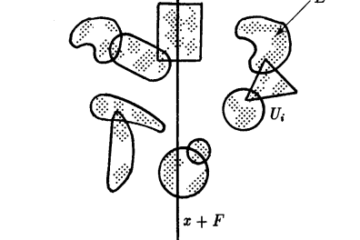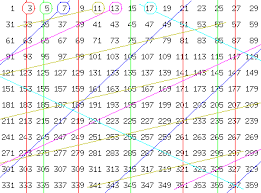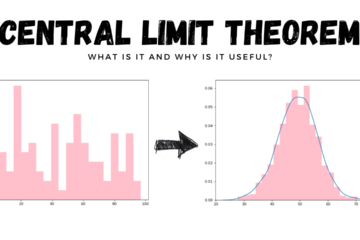下面就是一场英国KCL数学系7CCMFM05金融统计的代考成功案例:
PartA全做PartB二选一

PartA
英国KCL数学系7CCMFM05金融统计考试partA
Consider the one-period market with $r=\frac{1}{10}, s=2, d=\frac{1}{2}$ and $u=3$, in our usual notation. A contract specifies that
The holder of the contract will sell 2 units of stock, and be paid $K$ units of cash, at time 1 .
(a) Explain briefly why the contingent claim of this contract is
$$
\Phi\left(S_{1}\right)=K-2 S_{1}
$$
(b) Find a replicating portfolio $h$ for this contingent claim.
(c) Write down the value $V_{0}^{h}$ of $h$ at time 0 .
(d) Find the numerical values of risk-neutral probabilities
$$
q_{u}=\frac{(1+r)-d}{u-d} \quad \text { and } \quad q_{d}=\frac{u-(1+r)}{u-d} \text { . }
$$
Hence, check that $\frac{1}{1+r} \mathbb{E}^{\mathbb{Q}}\left[\Phi\left(S_{1}\right)\right]$ and $V_{0}^{h}$ have the same values.
(e) For which $K$ does the contract have value zero at time 0 ?
\bigin{proof}
(a) The holder will be paid $K$ units of cash, resulting in a gain of $K$, and give away 2 units of stock, each of which is worth $S_{1}$, resulting in a loss of $2 S_{1}$. [1] Hence
$$
\Phi\left(S_{1}\right)=K-2 S_{1}
$$
Pitfall: This is not a European put option. The holder of this contract must pay $K$ units of cash and be given 2 stock.
(b) The possible values taken by $S_{1}$ are $s u=6$ and $s d=1$. A replicating portfolio $h=(x, y)$ must satisfy $V_{1}^{h}=\Phi\left(S_{1}\right),[1]$ meaning that
$$
\begin{aligned}
\left(1+\frac{1}{10}\right) x+6 y &=K-12 \
\left(1+\frac{1}{10}\right) x+y &=K-2
\end{aligned}
$$
[2] We now solve these equations. Taking one away from the other, we obtain $5 y=-10$, hence $y=-2$ which gives $x=\frac{K}{11 / 10}=\frac{10 K}{11} .$ [1]
(c) The value of the contract is
$$
V_{0}^{h}=x+s y=\frac{10 K}{11}-4
$$
[1] at time 0 .
(d) The risk-neutral probabilities are
$$
\begin{aligned}
&q_{u}=\frac{11 / 10-1 / 2}{3-1 / 2}=\frac{3 / 5}{5 / 2}=\frac{6}{25} \
&q_{d}=\frac{3-11 / 10}{3-1 / 2}=\frac{19 / 10}{5 / 2}=\frac{19}{25}
\end{aligned}
$$
[1] This gives us
$$
\begin{aligned}
\frac{1}{1+r} \mathbb{E}^{\mathbb{Q}}\left[\Phi\left(S_{1}\right)\right] &=\frac{1}{11 / 10}\left(\frac{6}{25}(K-12)+\frac{19}{25}(K-2)\right) \
&=\frac{10}{11}\left(K-\frac{110}{25}\right) \
&=\frac{10 K}{11}-4
\end{aligned}
$$
[2] which is equal to the value of $V_{0}^{h}$ that we found in (c).
(e) The contract is worth zero at time 0 if $\frac{10}{11} K-4=0$, that is if $K=\frac{22}{5} .[1]$
\end{proof}
Let $S_{n}=\sum_{i=1}^{n} X_{i}$, be a random walk, in which $\left(X_{i}\right){i \in \mathbb{N}}$ is a sequence of i.i.d. random variables with common distribution $\mathbb{P}\left[X{i}=\frac{1}{i^{2}}\right]=\mathbb{P}\left[X_{i}=-\frac{1}{i^{2}}\right]=\frac{1}{2}$.
(a) Show that $\mathbb{E}\left[\left|S_{n}\right|\right] \leq \sum_{i=1}^{n} \frac{1}{i^{2}}$.
(b) Explain briefly why part (a) means that $S_{n}$ is bounded in $L^{1}$.
(c) Show there exists a random variable $S_{\infty}$ such that $S_{n} \stackrel{\text { a.s. }}{\rightarrow} S_{\infty}$ as $n \rightarrow \infty$.
(d) Determine whether $\left(S_{n}\right)$ is bounded in $L^{2}$, and briefly state what else (if anything) can be deduced about $S_{\infty}$ as a consequence.
(a) Using the triangle inequality, and monotonicity of $\mathbb{E},[1]$
$$
\mathbb{E}\left[\left|S_{n}\right|\right]=\mathbb{E}\left[\left|\sum_{i=1}^{n} X_{i}\right|\right] \leq \mathbb{E}\left[\sum_{i=1}^{n}\left|X_{i}\right|\right]=\mathbb{E}\left[\sum_{i=1}^{n} \frac{1}{i^{2}}\right]=\sum_{i=1}^{n} \frac{1}{i^{2}} \text { . }
$$(b) From part (a) we have $\mathbb{E}\left[\left|S_{n}\right|\right] \leq \sum_{i=1}^{\infty} \frac{1}{i^{2}}<\infty$, which is finite and independent of $n .[1]$ Hence $\sup {n} \mathbb{E}\left[\left|S{n}\right|\right]<\infty .[1]$
(c) We aim to use the martingale convergence theorem. $[1]$ We must check that $\left(S_{n}\right)$ is a martingale. We use the filtration $\mathcal{F}{n}=\sigma\left(X{i}: i=1, \ldots, n\right)$. Since $X_{i} \in m \mathcal{F}{n}$, we have $S{n} \in$ $m \mathcal{F}{n} \cdot[1]$ We have already shown in (a) that $\mathbb{E}\left[\left|S{n}\right|\right]<\infty$, so $S_{n} \in L^{1}$. [1] Lastly,
$$
\begin{aligned}
\mathbb{E}\left[S_{n+1} \mid \mathcal{F}{n}\right] &=\mathbb{E}\left[X{n+1}+S_{n} \mid \mathcal{F}{n}\right] \ &=\mathbb{E}\left[X{n+1}\right]+S_{n} \
&=S_{n}
\end{aligned}
$$
[1] Here we use that $S_{n} \in m \mathcal{F}{n},[1]$ that $X{n+1}$ is independent of $\mathcal{F}{n},[1]$ and that $\mathbb{E}\left[X{n+1}\right]=0$
(d) We have
$$
\begin{aligned}
\mathbb{E}\left[\left|S_{n}\right|^{2}\right] &=\mathbb{E}\left[S_{n}^{2}\right] \
&=\mathbb{E}\left[\sum_{i=1}^{n} \sum_{j=1}^{n} X_{i} X_{j}\right] \
&=\sum_{i=1}^{n} \sum_{j=1}^{n} \mathbb{E}\left[X_{i} X_{j}\right] \
&=\sum_{i=1}^{n}\left(\mathbb{E}\left[X_{i}^{2}\right]+\sum_{j=1 \atop j \neq i}^{n} \mathbb{E}\left[X_{i} X_{j}\right]\right.\
&=\sum_{i=1}^{n}\left(\frac{1}{i^{4}}+\sum_{j=1 \atop j \neq i}^{n} 0\right) \
&=\sum_{i=1}^{n} \frac{1}{i^{4}} .
\end{aligned}
$$
PartB
英国KCL数学系7CCMFM05金融统计考试partB
Use Ito’s formula to calculate the stochastic differential of $d Z_{t}$ where
(a) $Z_{t}=t B_{t}$
(b) $Z_{t}=1+t^{2} X_{t}$ where $d X_{t}=\mu d t+\sigma B_{t} d B_{t}$ and $\mu, \sigma$ are deterministic constants.
(c) $Z_{t}=e^{-2 t} S_{t}$ where $d S_{t}=2 S_{t} d t+5 S_{t} d B_{t}$.
In which cases is $Z_{t}$ is a martingale?
(a)
$$
\begin{aligned}
d Z_{t} &=\left{\left(B_{t}\right)+(0)(t)+\frac{1}{2}(1)^{2}(1)\right} d t+(t)(1) d B_{t} \
&=B_{t} d t+t d B_{t}
\end{aligned}
$$(b)
$$
\begin{aligned}
d Z_{t} &=\left{2 t X_{t}+(\mu)\left(t^{2}\right)+\frac{1}{2}\left(\sigma B_{t}\right)^{2}(0)\right} d t+\left(\sigma B_{t}\right)\left(t^{2}\right) d B_{t} \
&=\left(2 t X_{t}+\mu t^{2}\right) d t+\sigma t^{2} B_{t} d B_{t} .
\end{aligned}
$$(c)
$$
\begin{aligned}
d Z_{t} &=\left{\left(-2 e^{-2 t} S_{t}\right)+\left(2 S_{t}\right)\left(e^{-2 t}\right)+\frac{1}{2}\left(5 S_{t}\right)^{2}(0)\right} d t+\left(5 S_{t}\right)\left(e^{-2 t}\right) d B_{t} \
&=5 e^{-2 t} S_{t} d B_{t}
\end{aligned}
$$
Case (c) is a martingale because here $d Z_{t}$ has only a $(\ldots) d B_{t}$ term, and therefore $Z_{t}=$ $Z_{0}+\int_{0}^{t} \ldots d B_{t}$ is a martingale because Ito integrals are martingales.
(a) Within the Black-Scholes model, use the risk neutral valuation formula to find the prices at time $t$ of the contingent claims
i. $\Phi\left(S_{T}\right)=3 S_{T}+5$, where $0 \leq t \leq T$.
ii. $\Psi\left(S_{T}\right)=S_{1} S_{T}+1$, where $1 \leq t \leq T$.
(b) With the same contingents claims as in (a):
i. Describe a constant portfolio strategy that replicates $\Phi\left(S_{T}\right)$ during time $[0, T]$.
ii. Is it possible to replicate $\Psi\left(S_{T}\right)$ using a constant portfolio?
(c) For a portfolio containing a single contract with contingent claim $\Phi\left(S_{T}\right)$ :
i. Calculate the amount of stock that we would need to buy/sell in order to make our portfolio delta neutral at time 0 .
ii. If we did buy/sell this amount of stock at time 0 , how long would our new portfolio stay delta-neutral for?
(d) Suggest one reason why we might want to hold a delta neutral portfolio.
.
(a) i. Using the explicit formula for geometric Brownian motion (see the formula sheet) we obtain
$$
\begin{aligned}
e^{-r(T-t)} \mathbb{E}^{\mathbb{Q}}\left[3 S_{T}+5 \mid \mathcal{F}{t}\right] &=e^{-r(T-t)} \mathbb{E}^{\mathbb{Q}}\left[3 S{t} e^{\left(r-\frac{1}{2} \sigma^{2}\right)(T-t)+\sigma\left(B_{T}-B_{t}\right)}+5 \mid \mathcal{F}{t}\right] \ &=e^{-r(T-t)}\left(3 S{t} e^{\left(r-\frac{1}{2} \sigma^{2}\right)(T-t)} \mathbb{E}^{\mathbb{Q}}\left[e^{\sigma\left(B_{T}-B_{t}\right)} \mid \mathcal{F}{t}\right]+5\right) \ &=e^{-r(T-t)}\left(3 S{t} e^{\left(r-\frac{1}{2} \sigma^{2}\right)(T-t)} \mathbb{E}^{Q}\left[e^{\sigma\left(B_{T}-B_{t}\right)}\right]+5\right) \
&=e^{-r(T-t)}\left(3 S_{t} e^{\left(r-\frac{1}{2} \sigma^{2}\right)(T-t)+\frac{1}{2} \sigma^{2}(T-t)}+5\right) \
&=e^{-r(T-t)}\left(3 S_{t} e^{r(T-t)}+5\right) \
&=3 S_{t}+5 e^{-r(T-t)}
\end{aligned}
$$
$[4]$ Here, we use that $S_{t}$ is $\mathcal{F}{t}$ measurable, $[1]$ and that $Z=\sigma\left(B{T}-B_{t}\right) \sim N\left(0, \sigma^{2}(T-\right.$
$t)$ is independent of $\mathcal{F}{t}$. [1] We use the formula sheet to provide an explicit formula for $\mathbb{E}\left[e^{Z}\right]$ ii. Assuming $1 \leq t \leq T$, we have $$ \begin{aligned} e^{-r(T-t)} \mathbb{E}^{\mathbb{Q}}\left[S{1} S_{T}+1 \mid \mathcal{F}{t}\right] &=e^{-r(T-t)}\left(S{1} \mathbb{E}^{\mathbb{Q}}\left[S_{T} \mathcal{F}{t}\right]+1\right) \ &=S{1} e^{r t} e^{-r T} \mathbb{E}^{Q}\left[S_{T} \mathcal{F}{t}\right]+e^{-r(T-t)} \ &=S{1} e^{r t} e^{-r t} S_{t}+e^{-r(T-t)} \
&=S_{1} S_{t}+e^{-r(T-t)}
\end{aligned}
$$
[2] Here we use that $S_{1} \in \mathcal{F}{t}$ for $t \geq 1,[1]$ and the fact (from Lemma 14.4.1 in lectures) that $M{t}=e^{-r t} S_{t}$ is a martingale in the risk-neutral world. $[1]$
(b) i. At time 0, we buy three units of stock [1] and $5 e^{-r T}$ in cash. [1] It’s value at time is then $3 S_{t}+5 e^{-r T} e^{r t}=\Phi\left(S_{T}\right)$
Therefore, this portfolio replicates $\Phi\left(S_{T}\right)$ for all $t \in[0, T] .[1]$
ii. It isn’t possible to replicate $\Psi\left(S_{T}\right)$ with a constant portfolio. [1] The replicating portfolio provided by Theorem $14.3 .1$ is unique, and contains a stock component $y_{t}=\frac{\partial F}{\partial s}\left(t, S_{t}\right)$ where $F(t, s)$ is the pricing formula obtained in (a.ii); in this case for $t \geq 1$ we have $F(t, s)=S_{1} s+e^{-r(T-t)}$ so $y_{t}$ is non-constant. $[1]$
(c) i. The value of our portfolio at time $t$ is given by $F\left(t, S_{t}\right)$, where $F$ is as in part
(a). If we add an amount $\alpha$ of stock into our portfolio then its new value will be $V\left(t, S_{t}\right)=F\left(t, S_{t}\right)+\alpha S_{t} .[1]$ To achieve delta neutrality, we want to choose $\alpha$ such that
$$
0=\frac{\partial V}{\partial s}\left(0, S_{0}\right)=3+\alpha
$$
$[1]$ Hence $\alpha=-3 .[1]$
ii. Our new portfolio has value $V\left(t, S_{t}\right)=F\left(t, S_{t}\right)-3 S_{t}=5 e^{-r(T-t)}$, and hence $\frac{\partial V}{\partial s}=0$ for all time. Hence, in this case our portfolio will stay delta neutral for all time.
(d) A delta neutral portfolio is advantageous because its value is, typically, less sensitive so sudden changes in the stock price. [1]
Module description
Syllabus
Common families of distributions in financial models, linear regression, time series models, parameter estimation (including least squares and maximum likelihood), simulation.
Prerequisites
Calculus, basic probability theory.
Assessment details
2 hr written examination or alternative assessment
Educational aims & objectives
This module expands the students’ toolkit to analyse and model financial risk factors. Statistical models are used in risk management, trading, as well as in contingent claim valuation in incomplete markets, where the focus is on the “real world measure”, as opposed to the risk neutral measure. The students will become familiar with some of the many interesting statistical features of financial time series such as non-stationarity, skewness, fat tails, time-varying moments, long-range dependence and stochastic volatility.
Teaching pattern
Two hours of lectures per week
Suggested reading list
Suggested reading/resources (link to My Reading Lists)

real analysis代写analysis 2, analysis 3请认准UprivateTA™. UprivateTA™为您的留学生涯保驾护航。


